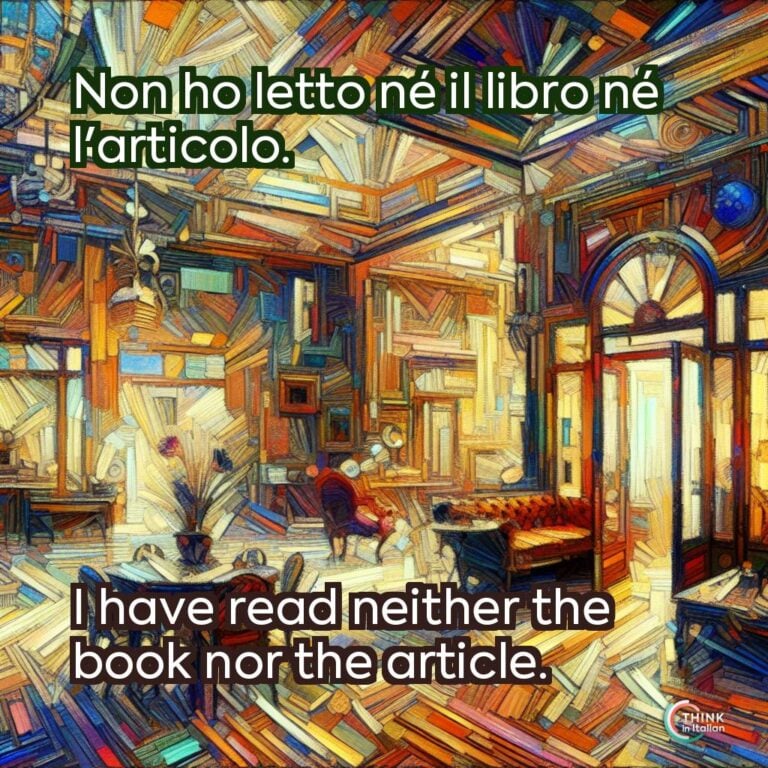“Sia” in Italian
What Does “sia” Mean?
In Italian, the word sia has two main functions: on the one hand, it is a conjugation of the subjunctive present tense of “essere”, and on the other hand it is a conjunction that is used in the fixed expression sia… sia… or sia… che… translatable in English as “both… and…“.
In this article, I will only discuss the second meaning of the word sia, that is, when it is used as a conjunction, as in the following example:
A cena mangio sia la pasta sia la carne.
For lunch I have both past and meat.
How to use “sia” in Italian?
When used as a conjunction, sia is used to express that two or more items are included in a statement.
Notice that, in all contexts, the expressions sia… sia… or sia… che… are equally accepted. The important thing is that the first item is always introduced by sia. Then, the choice of whether using sia again or che is up to you!
So, see that this conjunction is used to:
- Link two nouns or pronouns:
Mi piacciono sia i gatti sia i cani.
I like both cats and dogs.
Marco e Lucia sono una bella coppia. Ho conosciuto sia lui che lei quando andavo all’università.
Marco and Lucia are a great couple. I met both him and her when I was in university.
- Link two nouns introduced by a preposition:
Questo sito è navigabile sia su computer sia su smartphone.
This website can be browsed both on a computer and on a smartphone.
- Linking two adjectives:
Claudia è sia intelligente che simpatica.
Claudia is both smart and funny.
- Linking two verbs:
Luigi ama sia dipingere sia scolpire, è un grande artista!
Luigi loves both painting and sculpting, he is a great artist!
“Né” in Italian
What Does “Né” Mean?
Before I start explaining what né means, let me clarify that né and ne are two different things.
As you can see, one is written with an accent and the other isn’t. First of all, this should show you how important accents are in Italian, as they can completely change the meaning of words.
Now, let me show you the main difference: ne is a pronoun that is used to substitute for nouns that are introduced by the preposition di . Since it is a pronoun, it usually precedes the verb it is selected by – however remember that pronouns follow the verbs as well in specific circumstances.
Instead, né is a conjunction, just like sia, and it is used in the fixed expression né…né… meaning “neither… nor…” in negative sentences.
In this article, I will only discuss the second meaning of the word né, that is, when it is used as a conjunction, as in the following example:
Al supermercato non c’erano né le pesche né le banane.
At the supermarket there were neither the peaches nor the bananas.
How to use “Né” in Italian?
When used as a conjunction, né is used to express that two or more items are not included in a statement. Unlike sia, né has one possible structure only, namely né…né…. However, their use is the same.
So, see that this conjunction is used to:
- Link two nouns or pronouns:
Non posso mangiare né pesce né frutti di mare, sono allergico.
I can’t eat either fish or seafood, I’m allergic to it.
Non ho visto né lui né lei alla festa.
I saw neither her nor him at the party.
- Link two nouns introduced by a preposition:
Mia sorella non ha parlato né con mia madre né con mio padre.
My sister spoke neither with my mother nor my father.
- Link two adjectives:
Questo film non è né bello né interessante.
This movie is neither enjoyable nor interesting.
- Link two verbs:
Carlo è molto pigro, non vuole né lavorare né studiare.
Carlo is very lazy, he does not want to either work or study.
Both or None?
Entrambi o nessuno?
Whether you want to include more items together or you want to exclude them all, knowing how to use these two words is crucial to master Italian.
As I mentioned before, from a grammatical point of view, they are both conjunctions, which are very important words used to link clauses and sentences. If you are already familiar with some Italian conjunctions, you know how important these words are for fluency.
Therefore, wait no longer and start practicing these conjunctions!



